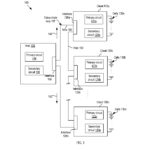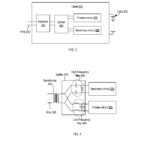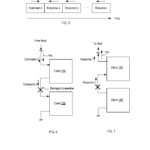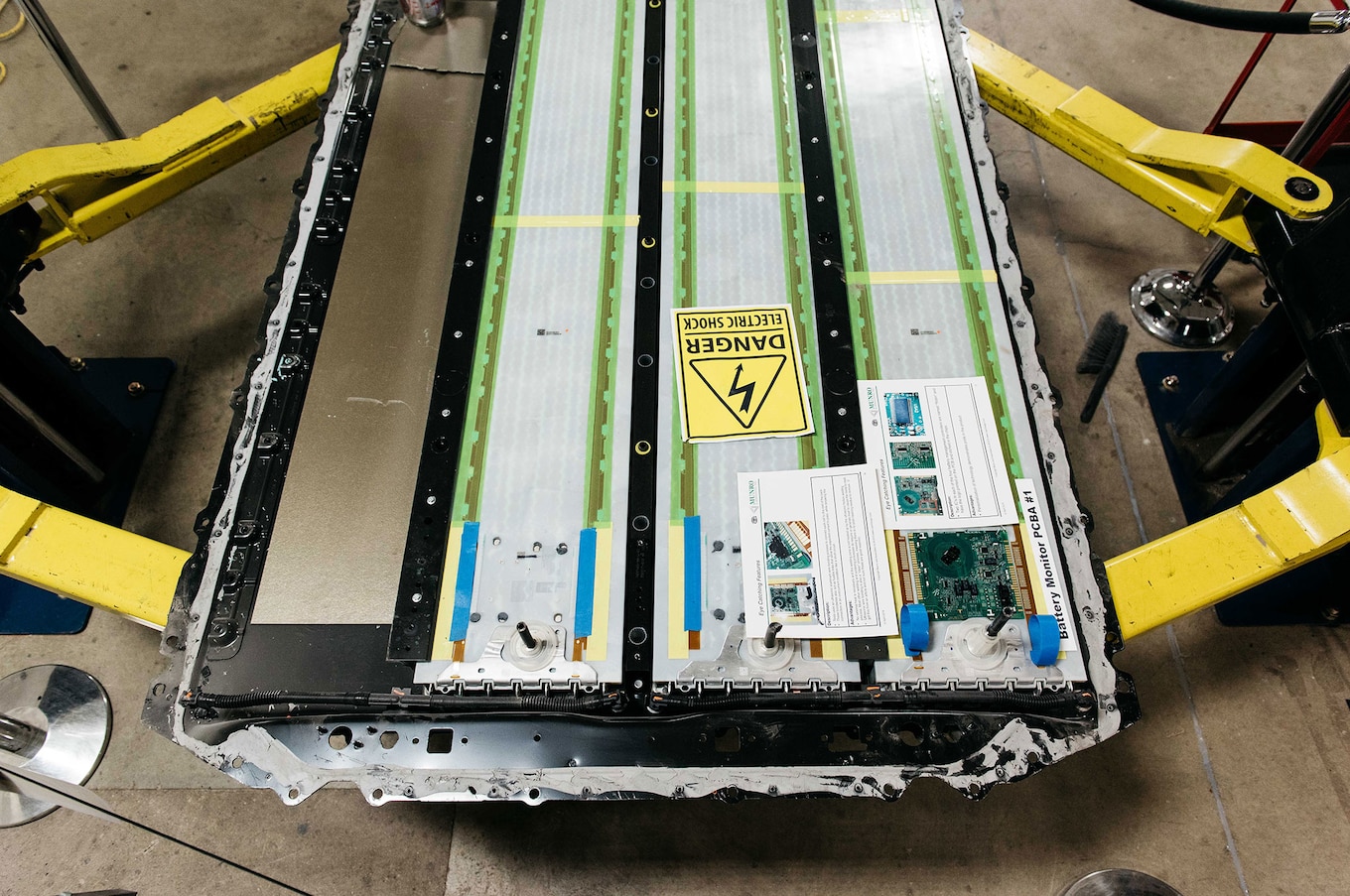
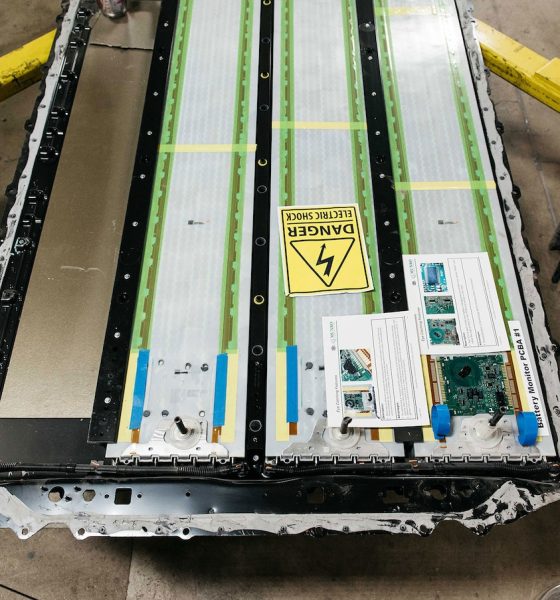
News
Tesla patent hints at more reliable batteries through ‘dynamic’ management system
It is no exaggeration to state that Tesla’s business hinges on its battery technology. Fortunately for the company, its batteries are among the best in the industry today. This is particularly notable in the case of Tesla’s electric cars, as well as its energy storage products. In terms of vehicles, Tesla’s battery tech has reached a point where it is capable of supporting the demands of closed circuit driving, as is the case with the Model 3 Performance’s Track Mode. In terms of battery storage, the quality and performance of Tesla’s batteries have been so impressive in South Australia that it appears to have started an energy storage movement.
Considering Tesla’s reputation for never staying still, though, it is almost certain that the company’s batteries will improve over time. This was mentioned by Tesla’s President of Automotive Jerome Guillen to CNBC last November, when he noted that the company’s technology consistently evolves. In his segment, the executive noted that “the design of the (battery) cell is not frozen,” indicating upcoming improvements in the near future.
A recently published patent points to one of these battery tech improvements. Titled “Multi-Channel and Bi-Directional Battery Management System,” the patent describes a way for Tesla to push the envelope on its battery management system even further. In the patent’s description, Tesla noted that the increasing demand for battery-based power is putting an emphasis on the performance demands of management systems, which ensure proper operation within a range of products like electric vehicles and energy storage units.
While battery management systems perform vital functions, the units themselves could be subject to various external factors. In the case of electric cars, the system could be subject to mechanical vibration and shock, varying environmental temperature, multiple power domains and a large number of interference sources that could deteriorate signals between the centralized management controller and multiple battery integrated circuits. Considering that batteries are the only power source for electric vehicles, instances involving a failure of the system could render an electric vehicle inoperable. With this in mind, Tesla notes that there is a need for a battery management system that is “more robust and dynamic.”
- A diagram of Tesla’s battery management system. (Photo: US Patent Office)
- A diagram of Tesla’s battery management system. (Photo: US Patent Office)
- A diagram of Tesla’s battery management system. (Photo: US Patent Office)
Diagrams of Tesla’s battery management system. (Photo: US Patent Office)
Tesla’s patent describes what could be dubbed as a redundant battery management system, comprising a first client coupled within a multi-channel, bi-directional and daisy-chained communication loop. The electric car maker also outlined a method for identifying a failure location within a battery management system. Tesla describes these as follows.
“The battery management system may include a host (such as a microcontroller that manages at a system level) and clients (such as battery management integrated circuits that manage battery cells within the system). In embodiments, the host may be implemented in various structures including the previously mentioned microcontroller and manages the system by transmitting commands and receiving responses from one or more of the clients. Each client may monitor and control corresponding battery cells to measure the electrical and physical status of the cells, such as voltage, amount of remaining electrical charge and temperature of each cell. For instance, the client 120a may monitor the cells 130a. It is noted that each client may monitor a different number of battery cells. The client 120a may perform measurements (e.g., voltage, charge, temperature, etc.) as well as perform certain functions (e.g., bleed-off charge from a battery cell, etc).”
Tesla further discussed its rationale behind its use of daisy-chain loops for its battery management system.
“The host and each client may communicate commands and responses via a daisy-chain transmission path loop, where the daisy-chain loop may include a pair of wires that transmit electrical signals therethrough. In embodiments, the daisy-chain loop may connect the interface of the host to the interfaces of the clients in series so that communication may serially occur on one or multiple channels within the loop. “
“The battery management system is able to provide redundant communication paths because of its ability to bi-directionally communicate along the daisy-chain loop and because the two channels used on the daisy-chain loop each allow access to completely separate and redundant battery management systems. Specifically, the host is able to communicate in a clockwise direction around the serially connected clients as well as communicate in a counter-clockwise direction along the loop. This bi-directionality allows the host to communicate with each client in case there is a single failure within the daisy-chain loop. This redundancy applies to both channels.”
Ultimately, Tesla notes that these systems will result in what could only be described as “dynamic redundancy” across its battery management systems. This, of course, could foster a new generation of battery packs that are more reliable than the company’s already stellar batteries.
“One skilled in the art will recognize the use of a multi-channel signaling system as well as a bi-directional signaling architecture within the battery management system results in dynamic redundancy across the system itself. For example, if a primary or secondary circuit should fail on a client, the host may communicate a redundant command to the client using a different and fully operational channel. The multiple channel architecture ensures that even egregious malfunction of a sub-system, such as the transmission of spurious data, will not be able to interfere with normal operation of a complementary subsystem operating on a different channel. In addition, the bi-directionality of the system allows for compensation to occur in the event of a complete path failure somewhere within the loop.”
The past months have seen an influx of published patents for Tesla. Among these include an automatic tire inflation system patent that can pave the way for off-road capabilities for the company’s vehicles, a clever patent that would allow Tesla to address panel gaps during vehicle assembly, a patent that describes colored solar roof tiles, and even a system that uses electric cars as a way to improve vehicle positioning.
Tesla’s recently published patent on its Multi-Channel and Bi-Directional Battery Management System could be accessed in full here.

News
Tesla Model 3 and Model Y named top car buys in Norway
Despite growing competition from European and Korean brands, both models stood out for their balance of price, performance, and everyday usability.
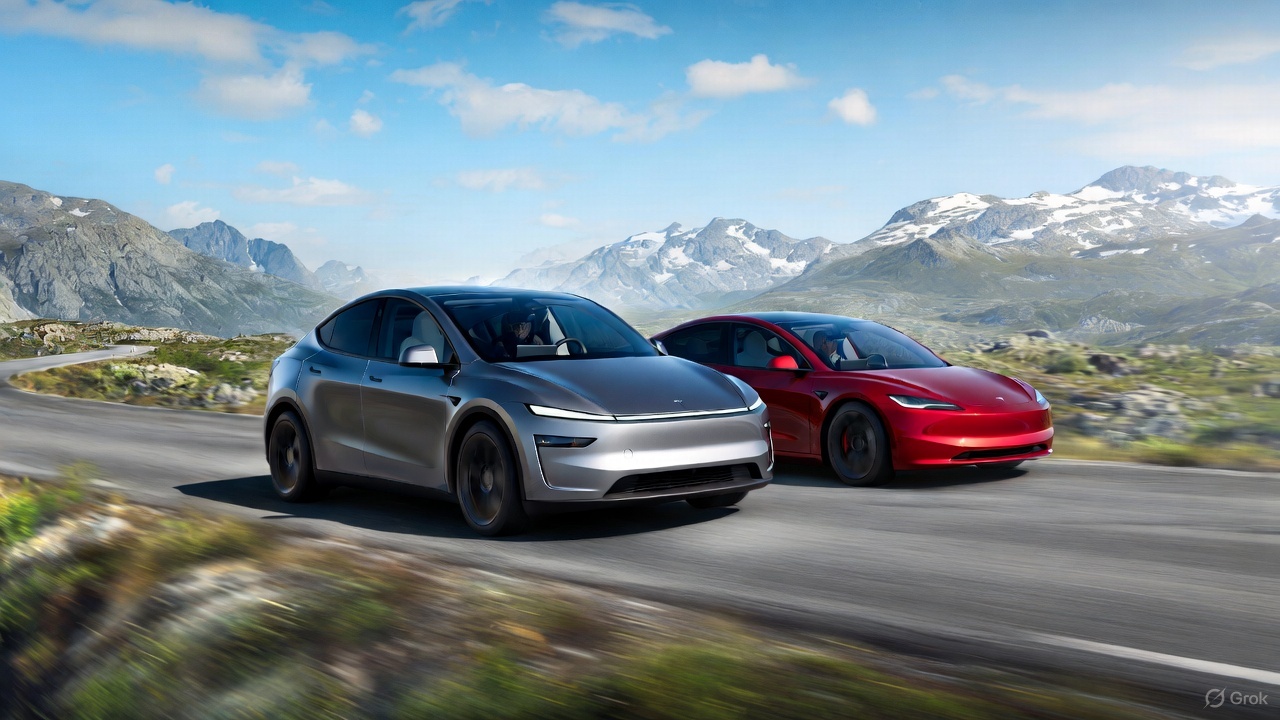
Norway’s annual roundup of the best car purchases featured Tesla’s two main sellers this year, with the Model 3 and Model Y securing top positions in their respective segments.
Despite growing competition from European and Korean brands, both models stood out for their balance of price, performance, and everyday usability. The verdict comes as electric vehicle adoption remained above 95% of new vehicle sales in the country.
Tesla Model 3 strengthens its value position
Among compact EVs, the Tesla Model 3 maintained its position as the best overall buy thanks to its strong blend of performance, efficiency, and updated features. Reviewers noted that every trim offered compelling value, especially with the all-electric sedan’s improved cabin ergonomics and the return of the turn-signal stalk, which was one of the few previous complaints among drivers.
The Model 3’s mix of long-range capability, low operating costs, and responsive handling has continued to set the benchmark for compact EVs in Norway. While competitors from Hyundai, Volkswagen, and Peugeot have narrowed the gap, Tesla’s price-to-capability ratio has remained difficult to beat in this segment, Motor.no reported.
“The Model 3 clearly offers the best value for money in the compact class, no matter which version you choose. Now it also gets the turn signal lever back. This eliminates one of the few flaws in a driving environment that many believe is the best on the market,” the publication wrote.
Tesla Model Y claims its crown
The Tesla Model Y emerged as Norway’s top family-car purchase this year. The latest refresh introduced improvements in ride quality, styling, and interior materials, allowing the Model Y to deliver a more premium driving experience without a substantial price increase.
Reviewers praised its spacious cabin, strong safety profile, and practical range, all of which reinforced its appeal for families needing an all-purpose electric crossover. The Model Y remains especially notable given its continued popularity in Norway even as Tesla faces declining sales in other global markets.
“The Model Y is back as the winner in the family class. The upgrade in the new year was even more extensive than expected. It is a slightly more elegant and significantly more comfortable Model Y that solidifies its position as Norway’s best car purchase in the most important class,” the Norwegian motoring publication noted.
News
Tesla Giga Berlin is still ramping production to meet Model Y demand: plant manager
Tesla Gigafactory Berlin has expanded to two full shifts, as per the facility’s plant manager, and a lot of it is due to Model Y demand.
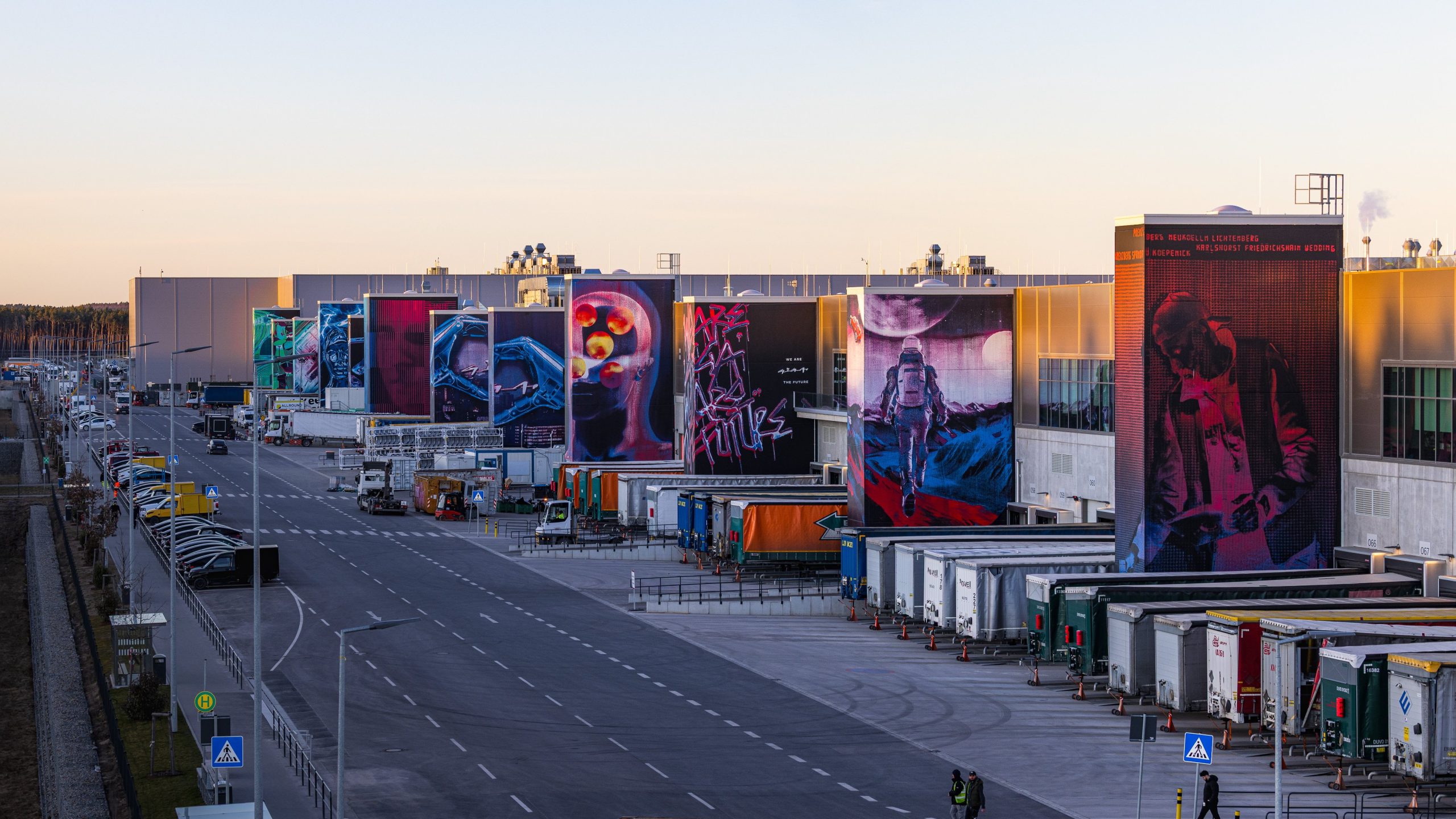
Tesla Gigafactory Berlin has expanded to two full shifts, as per the facility’s plant manager, and a lot of it is due to Model Y demand. While registrations in some countries such as Sweden have fallen sharply this year, the company’s sales in other key territories have been rising.
Giga Berlin shifts to two shifts
Giga Berlin factory manager André Thierig told the DPA that the facility has been running two shifts since September to manage a surge in global orders. And due to the tariff dispute with the United States, vehicles that are produced at Giga Berlin are now being exported to Canada.
“We deliver to well over 30 markets and definitely see a positive trend there,” Thierig said.
Despite Giga Berlin now having two shifts, the facility’s production still needs to ramp up more. This is partly due to the addition of the Tesla Model Y Performance and Standard, which are also being produced in the Grunheide-based factory. Interestingly enough, Giga Berlin still only produces the Model Y, unlike other factories like Gigafactory Texas, the Fremont Factory, and Gigafactory Shanghai, which produce more than one type of vehicle.
Norway’s momentum
Norway, facing an imminent tax increase on cars, has seen a historic spike in Tesla purchases as buyers rush to secure deliveries before the change takes effect, as noted in a CarUp report. As per recent reports, Tesla has broken Norway’s all-time annual sales record this month, beating Volkswagen’s record that has stood since 2016.
What is rather remarkable is the fact that Tesla was able to achieve so much in Norway with one hand practically tied behind its back. This is because the company’s biggest sales draw, FSD, remains unavailable in the country. Fortunately, Tesla is currently hard at work attempting to get FSD approved for Europe, a notable milestone that should spur even more vehicle sales in the region.
News
Tesla launches crazy Full Self-Driving free trial: here’s how you can get it
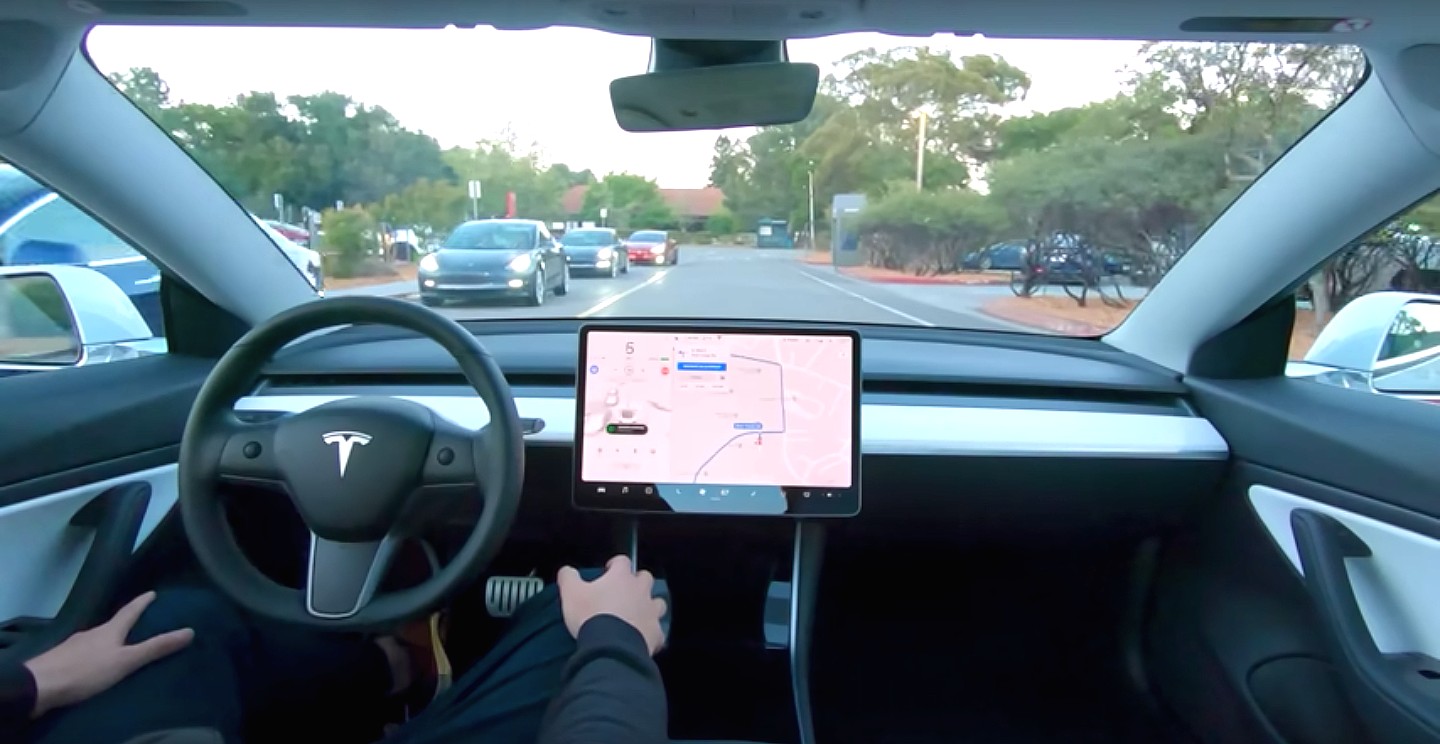
Tesla is launching a crazy Full Self-Driving free trial, which will enable owners who have not purchased the suite outright to try it for 30 days.
There are a handful of stipulations that will be needed in order for you to qualify for the free trial, which was announced on Thursday night.
Tesla said the trial is for v14, the company’s latest version of the Full Self-Driving suite, and will be available to new and existing Model S, Model 3, Model X, Model Y, and Cybertruck owners, who will have the opportunity to try the latest features, including Speed Profiles, Arrival Options, and other new upgrades.
🚨 Tesla is launching a free 30-day trial of Full Self-Driving in North America for owners.
It includes every model, but you need v14.2 or later, and you cannot have already purchased the suite outright. https://t.co/8CNmxxOkVl
— TESLARATI (@Teslarati) November 27, 2025
You must own one of the five Tesla models, have Full Self-Driving v14.2 or later, and have an eligible vehicle in the United States, Puerto Rico, Mexico, or Canada.
The company said it is a non-transferable trial, which is not redeemable for cash. Tesla is reaching out to owners via email to give them the opportunity to enable the Full Self-Driving trial.
Those who are subscribed to the monthly Full Self-Driving program are eligible, so they will essentially get a free month of the suite.
Once it is installed, the trial will begin, and the 30-day countdown will begin.
Tesla is making a major push to increase its Full Self-Driving take rate, as it revealed that about 12 percent of owners are users of the program during its recent earnings call.
Tesla CFO Vaibhav Taneja said during the call:
“We feel that as people experience the supervised FSD at scale, demand for our vehicles, like Elon said, would increase significantly. On the FSD adoption front, we’ve continued to see decent progress. However, note that the total paid FSD customer base is still small, around 12% of our current fleet.”
Earlier today, we reported on Tesla also launching a small-scale advertising campaign on X for the Full Self-Driving suite, hoping to increase adoption.
Tesla Full Self-Driving warrants huge switch-up on essential company strategy
It appears most people are pretty content with the subscription program. It costs just $99 a month, in comparison to the $8,000 fee it is for the outright purchase.
